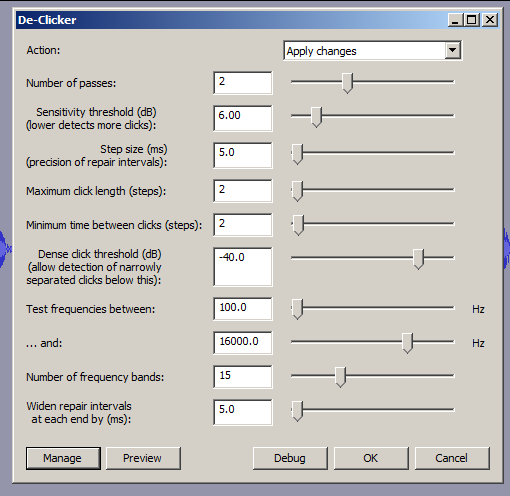These are the DeClicker settings I suggest for that …

BTW you have some distortion on that : e.g on “ammunition”, you’re a bit too close to the mic IMO.
(If you back-off a bit there will be less click-type noises too).
These are the DeClicker settings I suggest for that …

BTW you have some distortion on that : e.g on “ammunition”, you’re a bit too close to the mic IMO.
(If you back-off a bit there will be less click-type noises too).